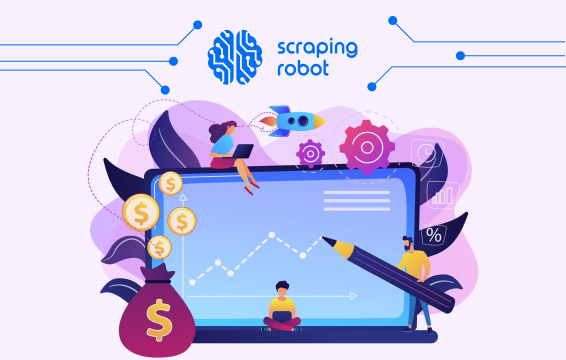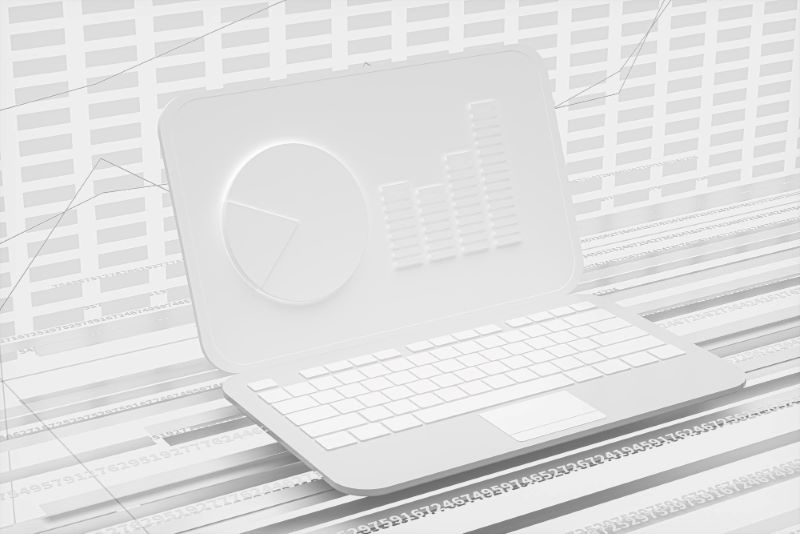Building A Competitive Pricing Strategy With Web Scraping

A world without competitors means a world of monopolized markets and out-of-control prices. Not only does competition keep costs reasonable, but it also can be a resource to help you with your competitive pricing strategy. To do this, you need data! Collecting data can become a mundane process, so turning to tools such as web scraping can help revolutionize your pricing process.
Ready to learn more? Check out this video:
If want to read more and are already well-versed in building a competitive pricing strategy, feel free to use the table of contents to understand how web scraping can help you gather the data to help you price your products better with your competitors.
Table of Contents
What is Competitive Pricing Strategy and How is it Calculated?

Competitive pricing, as defined by Investopedia, “is the process of selecting strategic price points to best take advantage of a product or service based market relative to the competition. You typically utilize this pricing strategy amongst products that have similar attributes, benefits, or features.
Typically, you only use this method when comparing products rather than services. Services can vary in every business, while a product can quickly have similar benefits and attributes to their competition.
Once you’ve reached an equal place between your costs and your profit margins, this is when the competitive strategy comes in. The value of the product determines pricing to your customer and your competitor’s prices for a similar product.
How is it calculated?
Once you’ve decided you’re on board with a competitive strategy, you must group your competitors and list them. But there are two different types of competitors you must be aware of, direct and indirect competition.
Direct competitors offer similar products and services and compete for the same market share as you. Indirect competitors offer products and services that overlap your products. This means that they could be products that only have some similar functions rather than being an almost identical match to your product. You are not competing for the same market share, but you should still consider these competitors because you can leverage your added benefits in your pricing strategy.
Next is the gathering of data. You can do this manually or automatically, but I’ll focus on automatic data collection through web scraping. You need accurate, quality data reflected in real-time, and the best way to collect this is through automated data collection, which is where web scraping comes in!
Three Methods to Competition Based Pricing

There are three methods to pricing your products competitively, and they are pricing above your competition, pricing on the same level as your competition, and pricing below your competition.
Pricing above your competition
To offer your products above your competition should reflect the feeling that the products you’re offering are a notch above the competitors. You have a “must-have” feature or attribute that your competition has not met, or your brand has the recognition and the reputation for being able to place yourself at a higher price point.
This also targets the group of customers that buy based on quality, rather than price. Luxury goods are the best example of this. If you’re in the market for a luxury handbag, there are useful bags that would get the job done just fine at a price point of fifty dollars or lower. But, if you’re looking for prestige and a bag made with higher-quality ‘designer’ materials, it could cost you anywhere from hundreds to thousands of dollars depending on the brand.
Pricing on the same level as your competition
This is essentially price matching. So, when you enter into a retailer, and they advertise that they match the prices when it is sold somewhere else for a lower price, they adjust their prices to be on the same level and make a margin of profitless, but still make the sale against their competitor. While this is usually a retailer method, the concept is still there.
The primary focus of when you don’t have the same but a similar product, you focus on the extra value your product has to offer above your competition. Even if your features are the same, you have to find something valuable to offer your customers. That’s where marketing comes in!
While this isn’t necessarily the most important strategy, it could indicate that if you’re considering pricing below your competition, your product is limited in its functions and features. While this isn’t always made out to be a bad thing, it could mean that you’re making a more affordable version to market to a different group of consumers who are looking for a similar product.
This strategy is more prevalent when you can mass-produce items and sell a unique experience when purchasing an article or something similar.
Advantages of Competitive Pricing

There is little reason not to consider pricing competitively, but let me tell you why you should consider a competitive strategy.
Low-risk
If you have intimidatingly established competitors, the chances are low that taking a few notes from their pricing strategy could go wrong. This may be because your competitors have spent more time working on their pricing strategies and building a loyal following that’s willing to pay whatever prices they set for their products. However, it still follows through that in any market. These prices are similar. A company isn’t going to price something to throw off their competitors; they’re going to do it in a way that makes them profitable. If you decide to price your products similarly, you can determine what strategy works best for your brand without jumping the gun and taking a considerable risk. Start with what you know, and go from there.
The theory is that your competitors are already at the achieved equilibrium, but don’t forget to factor in your costs, since they might be very different from your competitors’ and affect your pricing strategy differently. Every company is different, and the way they produce each product is different, and there’s not a single cost across the board to make your margins equal. However, collecting data can help you build a more competitive strategy.
Improve profit margins
With the misconception that competitive pricing means undercutting your competitors, this isn’t the case at all! Sometimes falling in the middle between your competitors works just as well.
There are a few factors that could play into this, most of them having to do with the supply chain and the changing price of product materials and parts. If the cost of your product can be elastic, it gives you more freedom with your profit margins to stay competitive.
Simplicity
The most significant selling point on pricing competitively (at least for me) is that it is so easy to gather the data and implement the strategy! At most, it requires basic research into who your competitors are with their product and prices and making a decision takes less time.
Other methods to formulate pricing takes a lot of time to develop and are usually not better than the recommended retail price crafted by your competitors. So, why not save time and spend your time worrying about other things concerning your business.
Utilizing Scraping Robot as a Tool for Competitive Pricing

Completing analysis so you can determine your competitive strategy isn’t done without data. Web scraping gives you the convenience of automatically collecting your data after a few quick commands, but let’s back up.
Amazon scraper
Scraping Robot’s Amazon scraper allows you to gather data not only to begin ranking your competitors but to start comparing prices to your products. Being that Amazon is the biggest e-commerce retailer in the world right now, its a great resource to begin comparing your products.
All it takes to begin scraping Amazon for prices and product descriptions are pasting URLs for the products you wish to gather data on, and you’re off to use that for your analysis in strategic pricing!
Other e-commerce scrapers
Scraping Robot offers more ready-to-use modules to scrape e-commerce sites for products and prices. With the ability to scrape Wayfair, eBay, Home Depot, and AliExpress, you have many great choices for sites you can scrape. If you don’t see an e-commerce site module, you can utilize our HTML scraper or even request a custom module for your use!
Scraping Robot has the modules to assist you in your pricing strategies. With a slew of e-commerce modules and the offer of 5000 free scrapes per month to get you started, there’s no reason not to give us a try. Our API allows you to gather this data in real-time and scrape to track price changes every 60 seconds.
Once you run out of scrapes, our pricing page gives you an accurate price for the scrapes that your organization needs. No gimmicks and extra fees. What you see is what you get.
The information contained within this article, including information posted by official staff, guest-submitted material, message board postings, or other third-party material is presented solely for the purposes of education and furtherance of the knowledge of the reader. All trademarks used in this publication are hereby acknowledged as the property of their respective owners.
